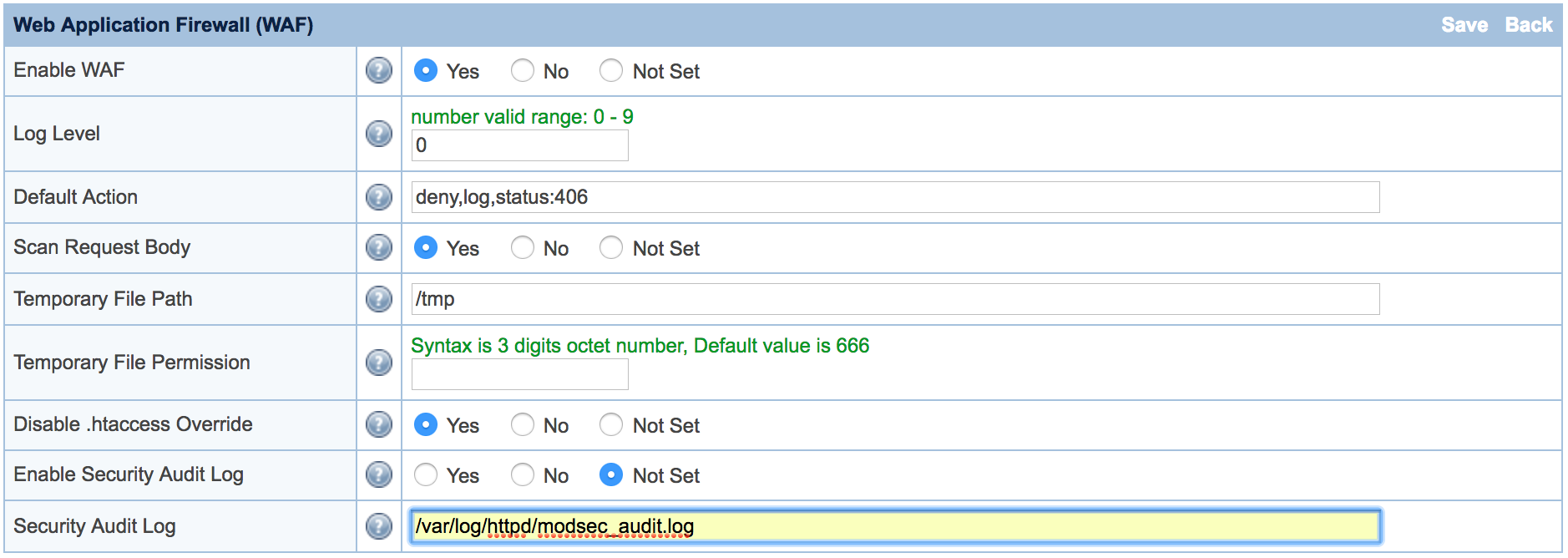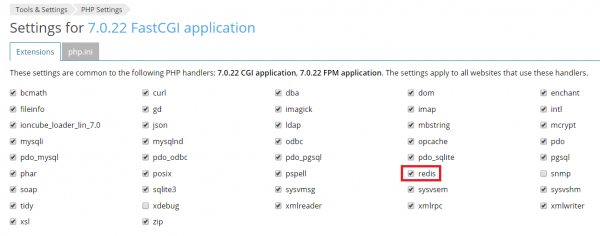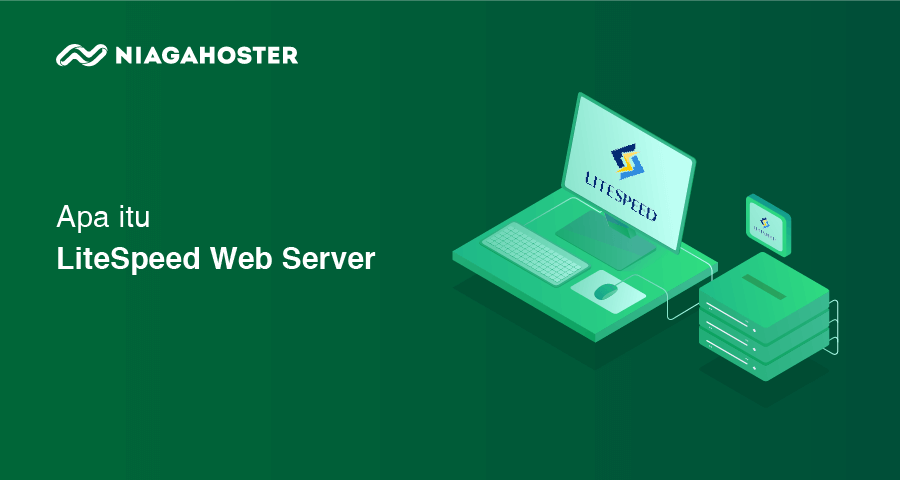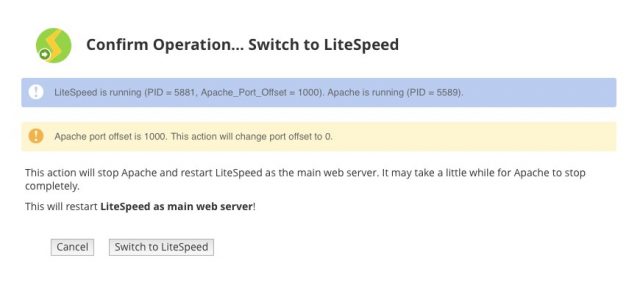Litespeed Httpd
General settings for the whole server. When path information is required in a setting, it can be either absolute or relative to $SERVERROOT. $SERVERROOT is the location where LiteSpeed web server has been installed (yourhomedir/lsws or /opt/lsws, for example). The server executable is under $SERVERROOT/bin. LiteSpeed Web Server provides several features aimed at reducing and even eliminating the impact of HTTP-level Denial of Service (DoS) and Distributed Denial of Service (DDoS) attacks. You can either use LSWS built-in features or third party ModSecurity rules such as Owasp, Atomicorp, Comodo and CloudLinux Imunify360.
| Original author(s) | George Wang |
|---|---|
| Developer(s) | LiteSpeed Technologies |
| Initial release | July 1, 2003; 17 years ago[1] |
| Stable release | |
| Written in | C, C++ |
| Operating system | CloudLinux OS, Centos/Red Hat/Fedora, Debian/Ubuntu, FreeBSD |
| Type | Web server |
| License | Non-free proprietary |
| Website | www.litespeedtech.com/products/litespeed-web-server |
LiteSpeed Web Server (LSWS), is a proprietaryweb server software. It is the 4th most popular web server, estimated to be used by 8.1% of websites as of December 2020.[3] LSWS is developed by privately held LiteSpeed Technologies. The software uses the same configuration format as Apache HTTP Server and is compatible with most Apache features.[4][5] An open source variant is also available.[6]
LSWS was released in 2003, and in August 2008 it became the 16th most popular web server.[7] In November 2016, LiteSpeed's market share grew from 0.39% to 3.29%, increasing its position from 10th to 4th most popular web server according to Netcraft.[8] In 2017, a team from Hong Kong Polytechnic University found it to be one of the six most popular web servers,[9] and it was estimated by a team at RWTH Aachen University to be running 9.2% of all HTTP/2-enabled websites.[10] As of April 2020, LSWS was used by 69.3% of websites using QUIC[11] and 47.6% of websites using HTTP/3.[12]
According to latest Netcraft web server survey, Litespeed never grew upon 2% of global market shares.[13]
Features[edit]


LSWS is compatible with commonly-used Apache features, including mod_rewrite, .htaccess, and mod_security. LSWS can load Apache configuration files directly and works as a drop-in replacement for Apache while fully integrating with popular control panels. LSWS replaces all Apache functions, but uses an event driven approach to handle requests.[14]

History[edit]
LiteSpeed Technologies was founded in early 2002 by a team of engineers led by George Wang. On July 1, 2003, LiteSpeed Web Server was officially released as a full-featured web server. In 2007, LiteSpeed Web Server became LiteSpeed Web Server Enterprise and was configured to be an Apache drop-in replacement. In that same year, the web server integrated with cPanel, DirectAdmin, and Plesk. LiteSpeed Web Server officially began supporting HTTP/2 in 2015 with version 5.0, and also released LSCache (cache plugin for WordPress) with ESI in version 5.0.10.[1] In 2017, LSWS released QUIC support.[15] In July 2019, LSWS announced support for HTTP/3.[16]
Litespeed Httpd

See also[edit]

References[edit]
Litespeed Httpd Exploit
- ^ ab'LiteSpeed Web Server Release Log Archive'. LiteSpeed. Retrieved 1 September 2017.CS1 maint: discouraged parameter (link)
- ^'LiteSpeed Web Server Release Log'. LiteSpeed. Retrieved 11 August 2020.CS1 maint: discouraged parameter (link)
- ^'Usage of web servers for websites'. W3Techs. Retrieved 30 December 2020.CS1 maint: discouraged parameter (link)
- ^'August 2015 Web Server Survey'. Netcraft. 13 August 2015. Retrieved 1 September 2017.CS1 maint: discouraged parameter (link)
- ^Adelstein, Tom; Lubanovic, Bill (2007). Linux system administration (1st ed.). Sebastopol, CA: O'Reilly. p. 162. ISBN9780596009526. OCLC71808193.
- ^'Get OpenLiteSpeed!'. 28 October 2019. Retrieved 28 October 2019.CS1 maint: discouraged parameter (link)
- ^'August 2008 Web Server Survey'. Netcraft. 29 August 2008. Retrieved 1 September 2017.CS1 maint: discouraged parameter (link)
- ^'November 2016 Web Server Survey'. Netcraft. 22 November 2016. Retrieved 1 September 2017.CS1 maint: discouraged parameter (link)
- ^Jiang, M.; Luo, X.; Miu, T.; Hu, S.; Rao, W. (June 2017). 'Are HTTP/2 Servers Ready Yet?'. 2017 IEEE 37th International Conference on Distributed Computing Systems (ICDCS): 1661–1671. doi:10.1109/icdcs.2017.279. ISBN978-1-5386-1792-2.
- ^Zimmermann, Torsten; Rüth, Jan; Wolters, Benedikt; Hohlfeld, Oliver (2017). 'How HTTP/2 Pushes the Web: An Empirical Study of HTTP/2 Server Push'(PDF). IFIP Networking Conference.
- ^'Distribution of web servers among websites that use QUIC'. Retrieved 2020-04-19.
- ^'Distribution of Web Servers among websites that use HTTP/3'. W3techs.com. 2019-12-02. Retrieved 2020-04-19.CS1 maint: discouraged parameter (link)
- ^'Netcraft web server survey'.
- ^'Event-Driven vs. Process-Based Web Servers'. LiteSpeed. Retrieved 1 September 2017.CS1 maint: discouraged parameter (link)
- ^'LiteSpeed Announces QUIC Support'. Retrieved 7 September 2017.CS1 maint: discouraged parameter (link)
- ^'LiteSpeed Web Server Release Log'.
Litespeed Httpd.conf
